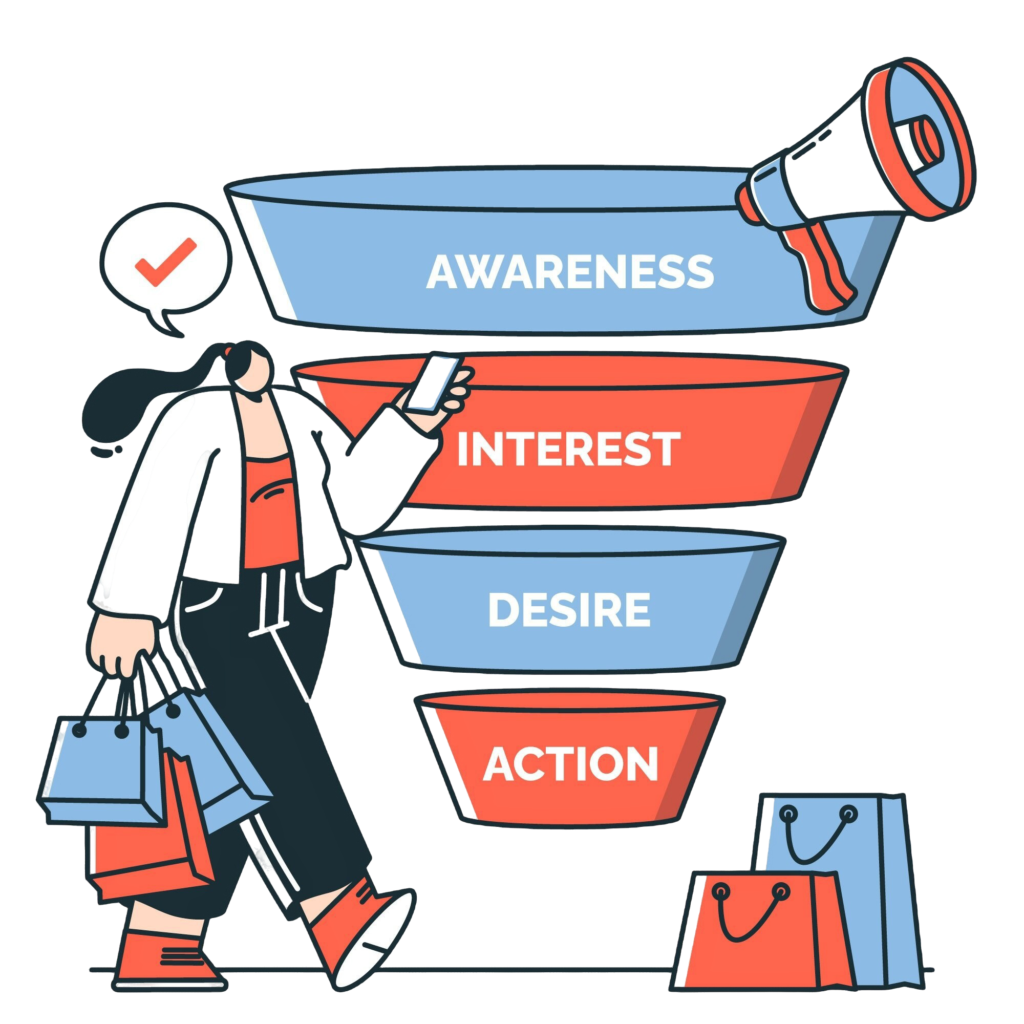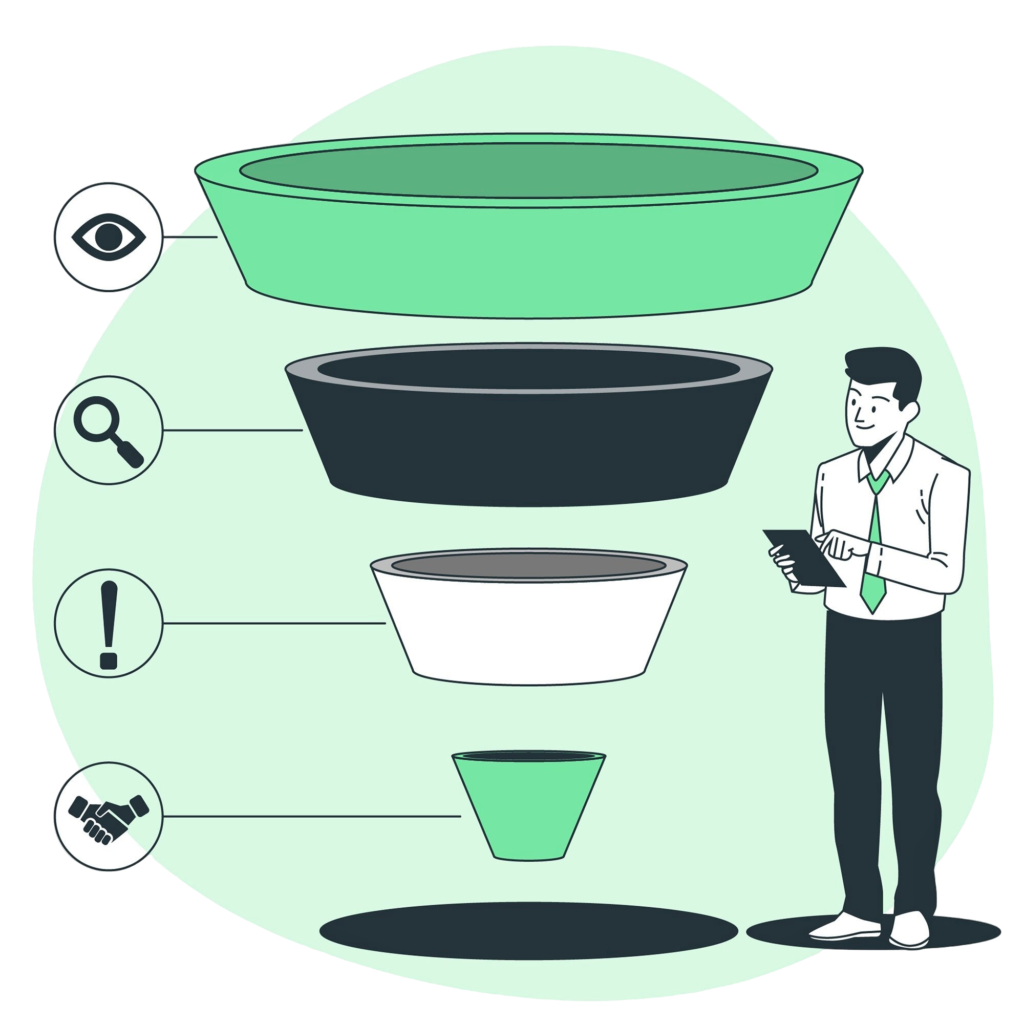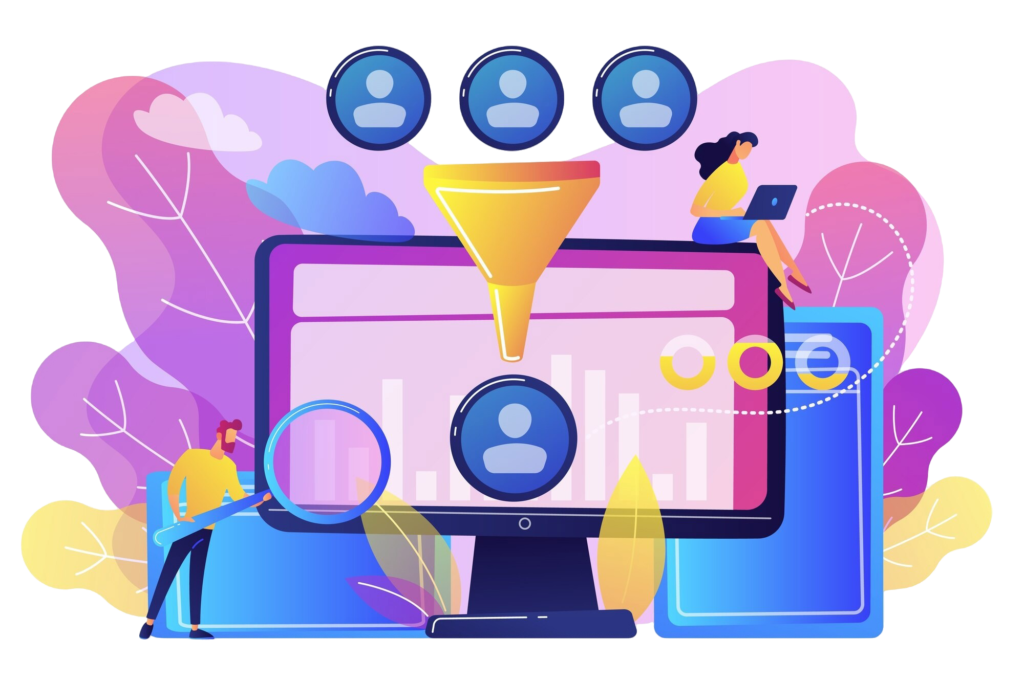
Understanding how to effectively guide your audience from awareness to conversion is critical for digital marketing success. The Digital Marketing Sales Funnel provides a structured approach to nurture leads and turn them into loyal customers. In this guide, we’ll explore its stages, importance, and how to create one from scratch, ensuring every aspect of the journey is addressed in detail.
What Is a Digital Marketing Sales Funnel?
A Digital Marketing Sales Funnel is a systematic framework that maps out the customer journey from the initial point of awareness to the final stage of conversion and beyond. It’s designed to meet potential customers where they are and guide them through a structured process tailored to their unique needs, challenges, and behaviors.
Unlike traditional funnels, the digital version leverages advanced tools and technologies such as analytics, automation, and multi-channel integration to create a seamless and personalized experience. This ensures businesses can maximize their ROI and build lasting customer relationships.
A well-designed Digital Marketing Sales Funnel is not just about driving sales—it’s about creating meaningful connections, addressing customer pain points, and providing solutions that align with their goals. By implementing this framework, businesses can effectively turn prospects into loyal advocates.
Stages of a Digital Marketing Sales Funnel
1. Awareness
The awareness stage serves as the gateway to your funnel. At this stage, your primary objective is to make your target audience aware of your brand’s existence. The Digital Marketing Sales Funnel begins with capturing attention and positioning your brand as a solution provider.
Key Strategies:
- Content Marketing: Publish blog posts, videos, and infographics that address your audience’s interests and pain points. For instance, a blog post titled “How Our Digital Marketing Sales Funnel Drives Results” can draw relevant traffic.
- Search Engine Optimization (SEO): Optimize your content to rank higher on search engines for relevant keywords, including “Digital Marketing Sales Funnel.”
- Social Media Campaigns: Use platforms like Instagram, LinkedIn, and Facebook to reach a wider audience with engaging visuals and captions.
- Pay-Per-Click (PPC) Advertising: Run targeted ads to attract the right audience quickly and efficiently.
2. Interest
At this stage, prospects begin exploring your brand more deeply. It’s essential to spark their interest by demonstrating value through various touchpoints in your Digital Marketing Sales Funnel.
Key Strategies:
- Email Newsletters: Share curated content, such as “10 Benefits of a Digital Marketing Sales Funnel,” to keep potential leads engaged.
- Webinars and Live Demos: Offer informative sessions to highlight your expertise in building an effective Digital Marketing Sales Funnel.
- Case Studies: Showcase successful outcomes and detailed stories about how your funnel strategy led to measurable results.
- Social Proof: Use testimonials, reviews, and influencer partnerships to validate your offerings and establish credibility.
3. Consideration
Prospects now actively evaluate your product or service. This stage of the Digital Marketing Sales Funnel is where you provide detailed information and address any objections or concerns.
Key Strategies:
- Comparison Charts: Highlight what sets you apart from competitors, focusing on your funnel’s efficiency and ROI.
- FAQs: Address common concerns, such as “What makes a Digital Marketing Sales Funnel essential for my business?”
- Free Trials: Allow prospects to experience your product firsthand, building trust and familiarity.
- Retargeting Ads: Remind prospects about your offerings as they browse online, reinforcing your value proposition.
4. Intent
This is the decision-making phase where prospects show signs of being ready to purchase. The Digital Marketing Sales Funnel focuses on eliminating any remaining barriers at this stage.
Key Strategies:
- Limited-Time Offers: Create urgency to act by promoting time-sensitive deals.
- Discount Codes: Provide an incentive to proceed with a purchase.
- Personalized Consultations: Address individual concerns directly, making the customer feel valued.
5. Purchase
The moment of conversion! Simplify the buying process to ensure a positive experience and leave a lasting impression in your Digital Marketing Sales Funnel.
Key Strategies:
- Secure Payment Options: Build trust by offering safe and convenient payment methods.
- Simple Checkout Process: Reduce friction with a user-friendly design, ensuring customers can complete transactions effortlessly.
- Post-Purchase Emails: Confirm transactions and offer additional resources to enhance customer satisfaction.
6. Retention
Customer retention ensures long-term business growth and profitability. The final stage of the Digital Marketing Sales Funnel focuses on nurturing relationships and encouraging loyalty.
Key Strategies:
- Loyalty Programs: Reward repeat customers with points, discounts, or exclusive benefits.
- Exclusive Content: Provide ongoing value through premium resources like ebooks, webinars, or insider tips.
- Feedback Requests: Show you care about their opinions and continuously improve your offerings.
Why You Need a Digital Marketing Sales Funnel

A Digital Marketing Sales Funnel is a blueprint for success. Here’s why every business needs one:
- Streamlined Processes: Focuses your efforts on specific stages of the customer journey, ensuring no lead is left behind.
- Enhanced Customer Understanding: Offers insights into customer behaviors and preferences, helping you refine your strategies.
- Improved Resource Allocation: Invest resources effectively where they matter most, optimizing your marketing budget.
- Scalable Growth: Enables repeatable strategies that can grow with your business, making your Digital Marketing Sales Funnel a sustainable tool.
- Measurable Results: Provides data to analyze and refine your approach, ensuring continuous improvement and higher ROI.
Differences Between a Digital Marketing and Traditional Marketing Funnel
Here are the key differences between digital marketing funnels and traditional funnels:
- Marketing Channels: Traditional marketing builds brand awareness through platforms like billboards, newspapers, magazines, TV, and radio. On the other hand, digital marketers use social media, search engines, and brand websites to reach their audience.
- Budget: TV and print advertising can be expensive, whereas digital marketing methods such as social media posts and blog writing tend to be more affordable.
- Personalization: Digital marketing excels in targeting specific demographics and buyer personas, making it highly personalized. In contrast, traditional marketing channels are designed to appeal to a broad audience.
- Audience Engagement and Reach: Major events like the Super Bowl attract over 100 million viewers annually, with 30-second commercials costing around $7 million. While not all traditional marketing methods reach this level, a viral social media post can garner millions of views and engagements at a much lower cost.
- Performance Metrics: Digital marketing offers precise tracking tools and analytics to monitor performance throughout the campaign. In contrast, traditional marketing, such as TV commercials, makes it harder to directly measure how many consumers made a purchase based on seeing an ad.
6 Main Types of Digital Marketing Sales Funnels
- Lead Generation Funnel
- Focuses on collecting valuable customer information, such as emails, to nurture leads through personalized campaigns.
- Example: Offering a free guide in exchange for email sign-ups, such as “5 Steps to Build Your Digital Marketing Sales Funnel.”
- Sales Funnel
- Designed to convert leads into paying customers through targeted strategies.
- Example: Using retargeting ads and exclusive discounts to drive conversions.
- Content Funnel
- Educates and builds trust by providing informative and value-driven content.
- Example: Publishing a blog series on solving common industry challenges and integrating “Digital Marketing Sales Funnel” insights.
- Webinar Funnel
- Uses webinars to engage and educate potential customers while showcasing your expertise.
- Example: Hosting a live Q&A session about your services and how a Digital Marketing Sales Funnel works.
- Email Marketing Funnel
- Builds long-term relationships through automated and personalized email sequences.
- Example: Sending drip campaigns tailored to a user’s journey, highlighting different stages of the Digital Marketing Sales Funnel.
- Social Media Funnel
- Captures attention and drives conversions using dynamic social media strategies.
- Example: Partnering with influencers for brand endorsements and sharing funnel-related success stories.
A Step-by-Step Guide to Creating a Digital Marketing Sales Funnel for Beginners
Step 1: Define Your Goals
Clearly outline objectives for each funnel stage, such as increasing traffic or boosting conversions. Align these goals with your overall business strategy and the unique capabilities of your Digital Marketing Sales Funnel.
Step 2: Know Your Audience
Identify your audience’s pain points, preferences, and behaviors to tailor your strategies effectively. Use surveys, customer interviews, and analytics to create detailed buyer personas.
Step 3: Create Valuable Content
Develop content that resonates with your audience at every stage, from blogs to detailed guides. For example, “Top 10 Strategies for Building a Digital Marketing Sales Funnel” can capture attention in the awareness phase.
Step 4: Leverage Tools and Platforms
Use tools like Google Analytics, HubSpot, and CRM systems to manage your funnel efficiently. These tools provide insights and help automate repetitive tasks within your Digital Marketing Sales Funnel.
Step 5: Optimize for Conversions
Test different CTAs, landing page designs, and strategies to find what works best. Ensure every element of your Digital Marketing Sales Funnel is designed to maximize engagement and drive action.
Step 6: Monitor and Analyze
Track KPIs such as conversion rates and customer acquisition costs to continuously improve. Use this data to refine your Digital Marketing Sales Funnel and adapt to changing market trends.
Digital Marketing Sales Funnel: Takeaways
Building a Digital Marketing Sales Funnel is not just a strategy—it’s a necessity in today’s competitive landscape. By aligning your efforts with the customer journey, you can create impactful experiences that drive loyalty and growth.
The Digital Marketing Sales Funnel empowers businesses to deliver targeted, personalized experiences at scale. Start implementing your funnel today to unlock new opportunities and elevate your business to the next level.



